NFTs
Rarible NFT Marketplace: What is it?
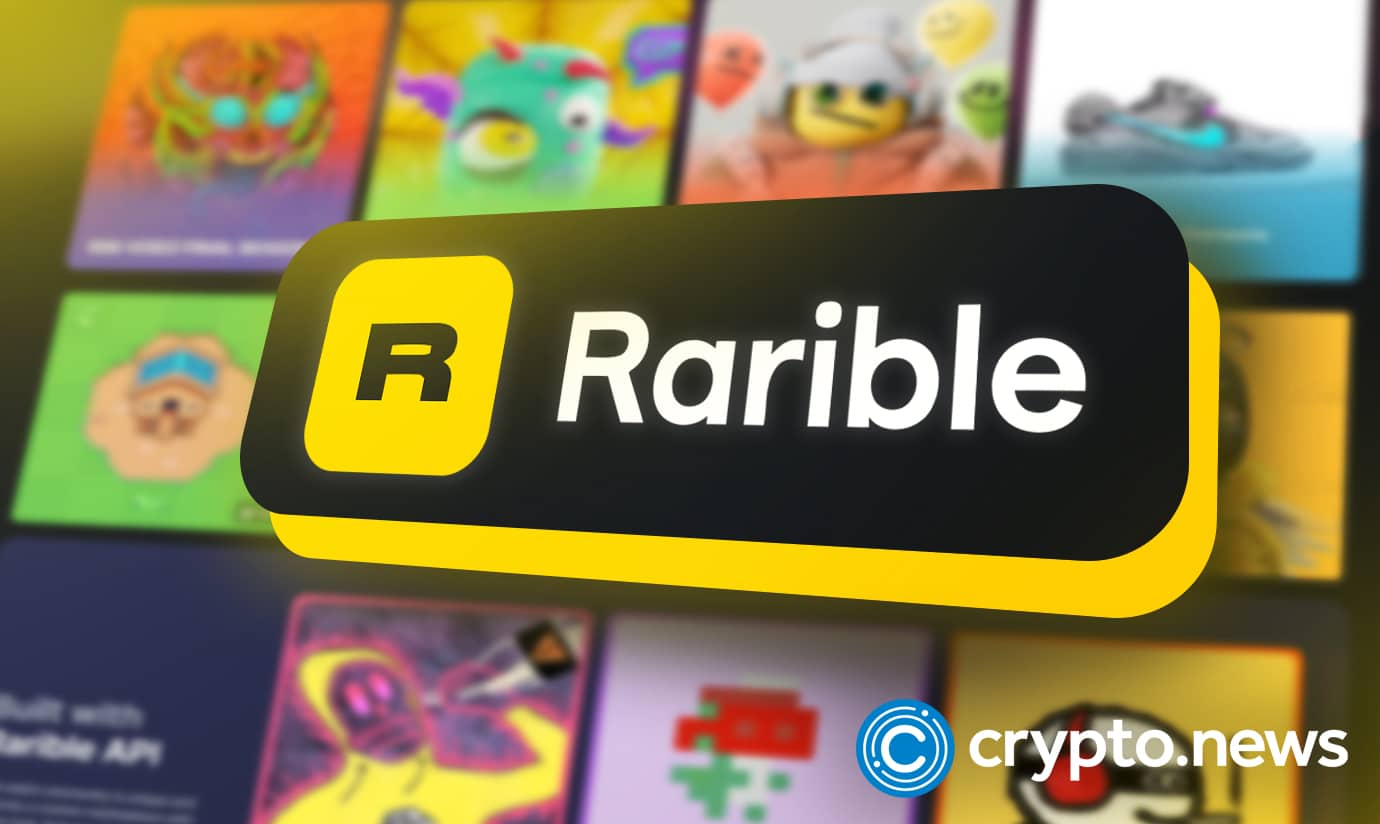
Rarible NFT is a platform for creating and trading a new generation of collectibles known as non-fungible tokens (NFTs).
Rarible overview
Rarible is an aggregated NFT marketplace that allows anyone to buy and trade non-fungible tokens from different marketplaces or create their own collectibles using blockchain technology. What does selling an NFT mean? You make unique items and create a token representing ownership or access to that content, which is stored on the blockchain.
You can sell your NFT directly to other collectors or trade them with other players. You don’t need to rely on third parties to manage your inventory. Instead, you can store your items on the blockchain and interact with other players through smart contracts.
The Rarible NFT marketplace: how it works
Rarible is an NFT marketplace that connects buyers and sellers, often content producers like digital artists, model makers, or meme makers. It enables trading NFTs without a middleman and creating your own marketplace.
Rarible utilizes two NFT token standards: ERC-721, which permits the creation of one-of-a-kind goods, and ERC-1155, which necessitates the production of numerous versions of a single item.
Rarible network supports the Ethereum, Polygon, Tezos, and Immutable X blockchains. For creating an NFT, or “minting,” you must pay a network fee that doesn’t go to Rarible. The cost varies depending on the blockchain you use. Popular ones like Ethereum tend to be pricier, while Tezos is cheaper. Alternatively, there is “free minting” when the buyer covers the fees. However, this places your NFT in Rarible’s collection, not your own.
Rarible receives 1% from the buyer and 1% from the seller for every sale.
NFT royalties
Royalty fees are a commission for the NFT creator when their work is sold again by someone else. By setting a royalty rate on an NFT, creators can earn a bit more each time their NFT is resold. So, whenever their NFT gets sold in the future, they get a piece of the sales price.
You can choose the percentage of royalties when you mint your work on the blockchain.
How to join, buy, and trade NFTs in the Rarible marketplace
Joining and trading on Rarible is relatively straightforward. Here are the step-by-step guides from registration to trading on Rarible:
1. Get a supported digital wallet
You will require a wallet that accepts one of the underlying blockchains that support Rarible: Ethereum, Tezos, Immutable X, or Polygon, to open an account to purchase and trade NFTs.
While MetaMask may be the most well-liked wallet among NFT collectors, more Ethereum wallets are compatible with Rarible, such as Portis, Coinbase Wallet, or Torus.
Tezos users can connect Beacon, Temple wallet, ImToken, OwnBit , and Trust Wallet.
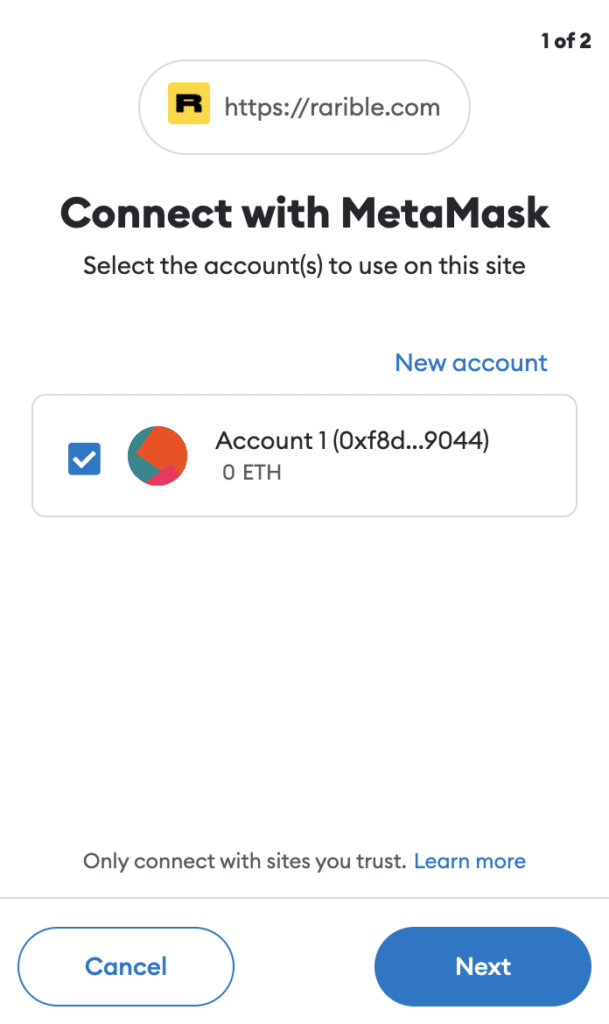
2. Agree to registration Terms and Conditions
New users must confirm they are over 13 years old and accept the terms and conditions. You will be able to manufacture, purchase, and sell NFTs through Rarible after a short while.
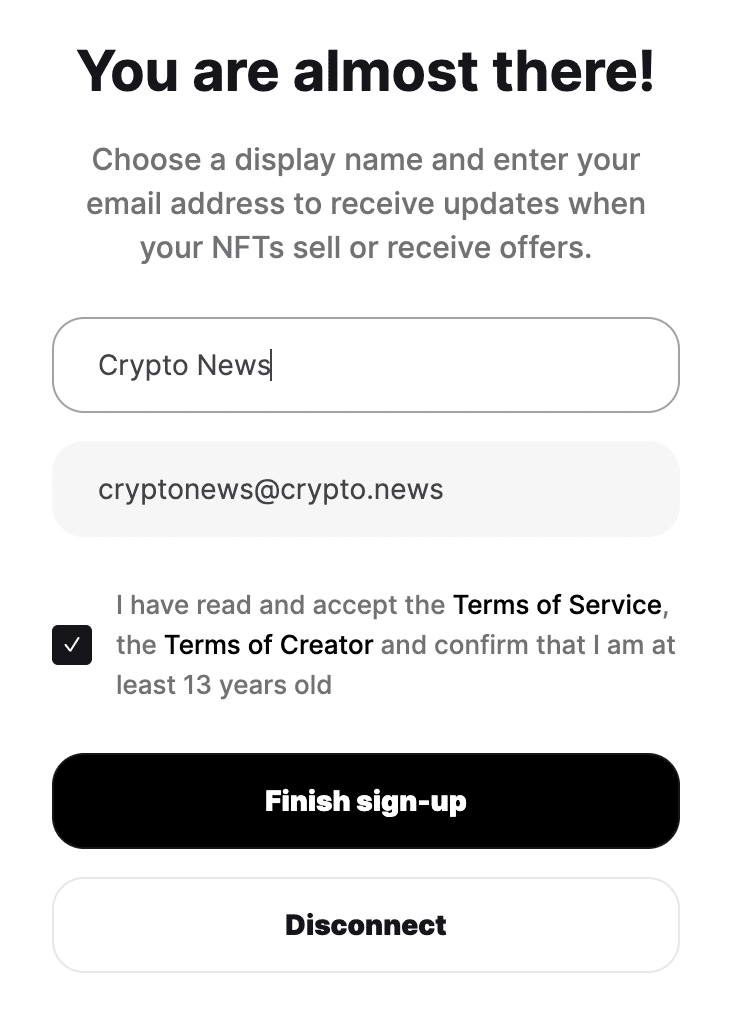
3. Top up your wallet
Before anything else, you’ll need to have some coins in your cryptocurrency wallet.
4. Minting/owning NFTs
Signing up may seem strange if this is your first experience with a crypto wallet. You are not required to provide your email address or set a password. To sign in, you only need to have your wallet connected.
After that, click “Create” and select your blockchain network. You then can produce single or multiple artworks. You upload your work, set a price, and select the selling method. Once you’ve finished configuring everything, click “Create item” and check your wallet.
5. Creating an NFT collection
When you mint on Rarible for free, your NFT will be added to the Rarible collection. It will still list you as the creator, but the Rarible brand will cover it. You can also build your own collection, but this requires gas fees.
6. Buying NFTs
First, sign in to Rarible using your wallet and find the NFT you want to purchase after connecting your wallet. Look for the yellow check mark, indicating the creator is verified.
After confirming the NFT you wish to acquire, Click “Buy now” and proceed to payment authorizing the purchase in your wallet if you have sufficient funds.
7. How to sell NFTs
NFT sellers can choose one of three ways to sell their artwork on the Rarible network. Users choose selling methods depending on personal goals and objectives. These include:
- Fixed cost: Set a price for the NFT before listing it for sale to a buyer.
- Accepting bids: You can accept offers for your NFT. Accept whatever seems reasonable to you.
- Timed auction: Launch the auction and accept bids. The highest bidder receives your NFT in exchange for their winning bid when the timed auction is over.
What makes Rarible unique from other marketplaces
Some popular Rarible competitors include the OpenSea marketplace, SuperRare, Makersplace, Foundation, and Mintable. However, Rarible has unique features that some of the other platforms don’t have. These include:
- Multi-chain – Many marketplaces utilize one blockchain exclusively. As a result, you lose out on desirable NFTs available on other chains.
- Credit card payments – As not everyone is at ease purchasing cryptocurrency. Rarible enables credit card transactions much like any other non-crypto online retailer.
- Zero-cost minting – Users can create NFTs on Ethereum using Rarible’s “Lazy minting” service without paying any gas costs since it has a lazy minting feature.
- Flexible royalties – You can choose up to 50% royalties that you’ll receive for the sale of your artwork in the future.
- Partnerships – Rarible has formed many partnerships with businesses and well-known personalities such as Twitter and the fast-food chain Yum! Brands, the boxer Floyd Mayweather Jr., and the actress Lindsay Lohan all launched their NFTs.
Is Rarible NFT marketplace safe?
NFTs have become a popular topic in the crypto space, but this sector has its security issues, such as NFT scams, pump-and-dump schemes, or selling fake NFTs.
However, Rarible presents itself as a secure network, and the developers s have stressed safety with a comprehensive privacy policy framework. Always do your own research before choosing a platform.
Takeaways
Rarible is a useful platform for collectors and art creators to make digital artworks. It allows new users to enter the industry without spending much money on cryptocurrencies or moving tokens from one wallet to another because it supports several blockchains.
FAQs
What is Rarible?
Rarible is Web3’s aggregated NFT marketplace where anybody can buy, mint, and sell digital goods. These can include domains, movies, music, and more. There is no middleman because ownership of the NFTs is transferred via Ethereum blockchain technology on the company’s web marketplace.
Which NFTs can I find on the Rarible marketplace?
Digital art, memes, music, photography, domains, DeFi, gaming, and metaverse NFTs can all be found on Rarible. You can use a filter by blockchain, price, or collection. It lacks some of its rivals’ more specialized sections for music, arts, sport, and other collectibles.
How much is an NFT on the Rarible marketplace?
Rarible charges a 1 percent fee on both buyers and sellers. Every buy transaction will cost you 1 percent, and every sell transaction will cost you 1 percent. You may also have to pay a fee to the network when you create (or “mint”) your NFT.
On Rarible, there are two ways to make money: by selling NFTs you’ve made or by reselling collectibles you’ve bought from the NFTs’ original producers. If you use the second approach, the original creators get paid royalties every time the product is sold.
How legit is Rarible?
Rarible is a legitimate platform for buying, selling, and trading non-fungible tokens (NFTs). It is a decentralized marketplace built on the Ethereum blockchain. It offers various digital assets, including art, music, videos, and other unique collectibles. However, there is always a risk of scams and fraudulent activities, as with any other platform. Make sure to verify the NFT’s authenticity and the seller’s reputation before making any transactions.
What is the disadvantage of Rarible?
One potential disadvantage of Rarible is that, as a decentralized platform, it may be more challenging for users to navigate and understand compared to centralized marketplaces. Users may need technical knowledge of blockchain and cryptocurrency to effectively use Rarible, which could be a barrier for some.
Another disadvantage is that transactions on the Ethereum blockchain, where Rarible is built, are subject to high fees during periods of network congestion. This can result in increased transaction fees for both buyers and sellers. Additionally, there is a lot of competition from other NFT marketplaces, which may make it more challenging for creators and collectors to stand out and make sales.
Is Rarible better than OpenSea?
It depends on your personal preferences and specific needs. Both platforms offer a decentralized marketplace for trading NFTs but differ in features and user experience. Rarible is known for its intuitive user interface and user-friendly experience, which may make it a better option for beginners or users lacking knowledge about blockchain and cryptocurrency. It also has a strong community of creators and collectors, making it a good platform for networking and discovering new artists and works.
On the other hand, OpenSea has a larger user base and more extensive offerings, with a wider range of NFT categories and more established artists and collections. It supports many blockchain networks beyond Ethereum, such as Polygon and Binance Smart Chain. Ultimately, it’s a matter of personal preference and the specific features that are important to you. It may be worth trying both platforms and seeing which one suits your needs better.
Is Rarible really free?
While Rarible is free for basic functions like browsing and searching for NFTs, it charges fees for certain actions on the platform. For example, Rarible charges a 1% fee on all NFT sales made on the platform. If you sell an NFT for 1 ETH, Rarible will deduct 0.01 ETH as a fee.
In addition to sales fees, Rarible also charges gas fees, which are the fees required to execute transactions on the Ethereum blockchain. These fees can vary depending on the current network congestion and can be significant during periods of high activity on the blockchain.
However, you can use “free minting”, in this case, your NFT buyer covers the fees. Remember that free minting also means your NFT will be added to the Rarible collection, not your own.
While Rarible charges fees for certain actions, it is important to note that these fees are standard for decentralized marketplaces and necessary to support the platform’s operation and development. However, it is always important to carefully review and understand the fees associated with any platform before engaging in any transactions.
How to remove NFT from Rarible
To remove an NFT from Rarible, you must initiate a burn transaction. It essentially destroys and removes the NFT token from circulation. Here’s how you can do it:
1. Go to the Rarible website and sign in.
2. Click on the “My Items” tab to view a list of the NFTs you own.
3. Locate the NFT you want to remove and click it to access its detail page.
4). On the detail page, look for the “More” button and click it to reveal a dropdown – menu.
5. From the dropdown menu, select the “Burn” option.
6. Confirm the burn transaction by following the prompts.
7. Once the transaction is confirmed, the NFT will be removed from your Rarible inventory.
It’s important to note that once an NFT is burned, it cannot be recovered or traded again.
How much does it cost to mint NFT on Rarible
Rarible does not charge a fee to mint NFTs on its platform. You can create and stamp an NFT for free using the Rarible minting interface. However, you must pay a transaction fee, also known as a gas fee, to complete the minting process on the Ethereum blockchain.
The gas fee varies depending on the current network congestion and can be significant during high activity on the blockchain. When minting an NFT on Rarible, you will be prompted to pay the gas fee as part of the transaction process. The gas fee goes to the miners who process and verify the transaction on the blockchain.
How to add NFT to Rarible
You can follow these steps to add an NFT to Rarible:
Create an Ethereum wallet if you don’t already have one. You can use a non-custodial wallet such as MetaMask, Trust Wallet, or Coinbase Wallet.
Connect your Ethereum wallet to Rarible by clicking the “Connect Wallet” button on the Rarible homepage, then select your wallet from the list.
Click the “Create” button on the Rarible homepage to begin the NFT minting process.
Follow the prompts to upload your NFT file, provide a name and description for your NFT, and set any additional attributes, such as royalty fees or unlockable content.
Once you’ve completed the above steps, you must sign and confirm the transaction on your Ethereum wallet to mint the NFT on the blockchain.
After minting the NFT, it will appear in your Rarible inventory, where you can view, edit, or list it for sale.
Note that while Rarible allows you to create and mint NFTs for free, you must pay a transaction fee, or gas fee, to complete the minting process on the Ethereum blockchain. The gas fee varies and depends on the network congestion; it can be high if the network is congested.
NFTs
RTFKT Announces Project Animus Reveal, Launches Egg Unboxing Event Amid Mixed Reactions | NFT CULTURE | NFT News | Web3 Culture
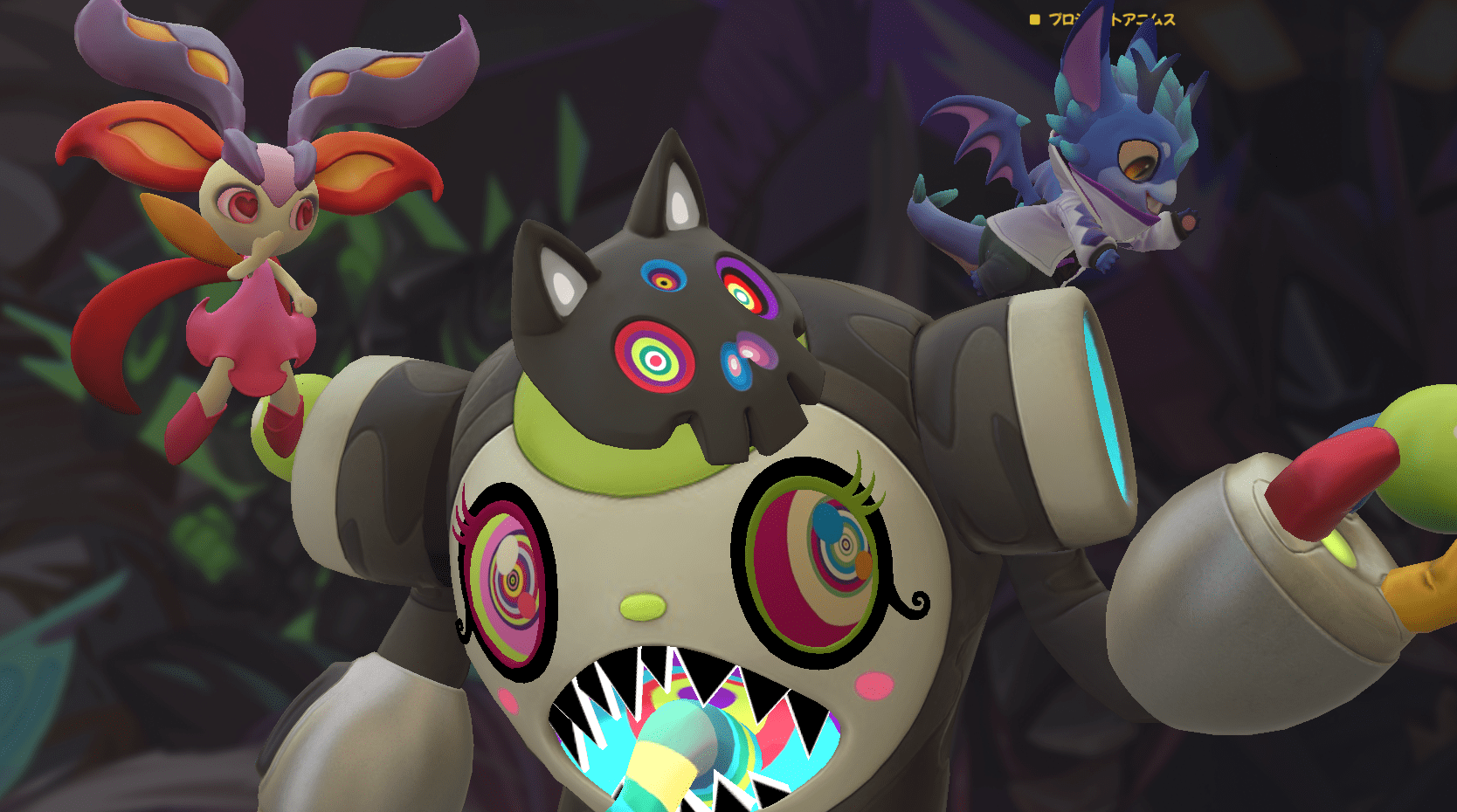
RTFKT, the innovative creator-led company renowned for its cutting-edge sneakers and metaverse collectibles, has officially unveiled its highly anticipated collection, Project Animus. This project marks a significant milestone in RTFKT’s journey, introducing a new dimension to its digital universe after a long period of development. However, the initial market response has been disappointing, with the revealed Animi trading at a floor price of 0.05 ETH, significantly lower than the eggs’ floor price of 0.09 ETH.
The Genesis of the Project Animus
Initially introduced in October 2022, Project Animus introduces a unique ecosystem of digital creatures called Animi. These Animi are designed to enhance Clone X’s avatars, offering an immersive and engaging experience for the community. The recent reveal showcased a diverse range of Animi species, each with distinct design traits and elemental attributes, breaking away from traditional trait-based rarity systems.
A New Digital Frontier: The History and Evolution of Project Animus
The Animus Project is RTFKT’s latest intellectual property, promising to revolutionize the NFT space with its unique digital creatures. The journey kicked off on October 8, 2022, with an interactive teaser event called “The Eggsperience.” This livestream event allowed attendees to explore a virtual Animus Research Facility, generating intrigue and excitement among the community.
Renowned artist Takashi Murakami played a significant role in the project, revealing the first Murakami-themed Animus creature, Saisei, on April 30, 2023. This collaboration added a layer of artistic prestige to the project, further elevating its status within the NFT community.
Animus Egg Incubation: A Journey from Egg to Animi
Clone X NFT holders had the opportunity to claim an Animus Egg until March 1, 2024. This was followed by the Animus Egg Hatching event, which ran from May 7 to June 4, 2024. During this period, holders of several RTFKT NFTs, including Clone X, Space Pod, Loot Pod, Exo Pod, and Lux Pod, were able to use a points-based system to increase their chances of hatching rarer Animi. The limited supply of Project Animus Eggs is capped at 20,000, with no public sale planned.
Mixed market reception
Despite the excitement and innovative features, the market reaction to the reveal of Project Animus has been lukewarm. Animi is currently trading at a floor price of 0.05 ETH, significantly lower than the eggs’ floor price of 0.09 ETH. This discrepancy has led to disappointment among some collectors who had high expectations for the project.
What Awaits Us: The Future of Project Animus
Following the reveal, RTFKT plans to release a collection of exclusive Animus Artist Edition characters. Holders of Clone X Artist Edition NFTs are guaranteed to get one of these special editions. The distribution will include 88 Special Edition Animus, with 8 Mythic (Dragon Sakura), 40 Shiny, and 40 Ghost Animus. The odds of receiving a Special Edition Animus are the same for all Eggs hatched, regardless of the points accumulated.
The remaining Animus characters will be distributed among unhatched Eggs, encompassing Special Edition Animus, as well as Cosmic Animus and Murakami Element from Generation 1, Generation 2, and Generation 3.
Conclusion
RTFKT’s Project Animus represents a bold step forward in the NFT space, combining cutting-edge technology with artistic collaboration to create an immersive and innovative digital ecosystem. However, the initial market reception highlights the challenges of living up to high expectations in the ever-evolving NFT landscape. As the project continues to evolve, it promises to deliver unique experiences and opportunities for its community, solidifying RTFKT’s position as a leader in the metaverse and digital collectibles arena.
Summary: RTFKT has unveiled Project Animus, introducing a unique ecosystem of digital creatures called Animi designed to enhance Clone X avatars. Despite the excitement, market response has been mixed, with Animi trading at a lower floor price than eggs. The project kicked off with an interactive event in October 2022, featuring collaborations with artist Takashi Murakami. Following the reveal, RTFKT will release special edition Animus characters. The total supply of Animus Eggs is limited to 20,000, with no public sale planned.
NFTs
The Olympics have reportedly ditched Mario and Sonic games in favor of mobile and NFTs
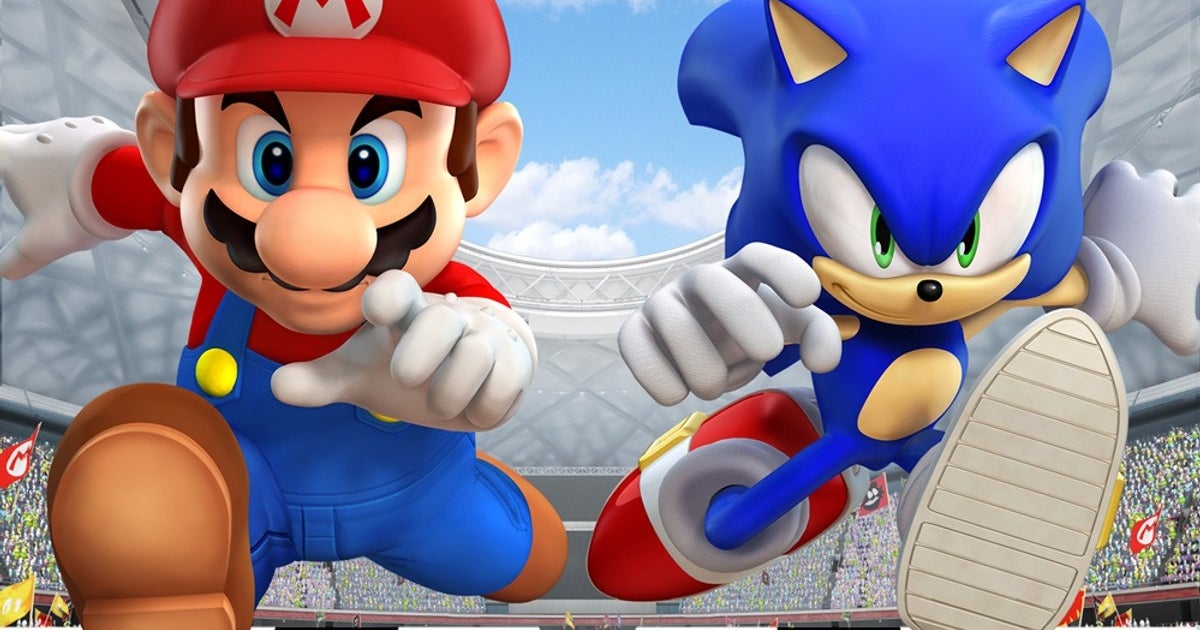
The long and historic partnership between Nintendo and Sega to create video games for the Olympics reportedly ended in 2020 as event organizers sought opportunities elsewhere.
Lee Cocker, who served as executive producer on several Mario & Sonic Olympics titles, said Eurogamer the International Olympic Committee let the licensing agreement lapse because it “wanted to look at other partners, NFTs and esports.”
“Basically, the IOC wanted to bring [it] “Turn inward and look for other partners so you can get more money,” Cocker added.
The 2024 Summer Olympics kicked off in Paris last week, but there were no Mario & Sonic games available in time for the event to begin – the first time this has happened since the original release in 2007 to coincide with the 2008 Beijing Summer Olympics.
Over the past two decades, there have been four Mario and Sonic adaptations for the Summer Olympics, as well as two for the Winter Olympics.
This year, instead of a Nintendo/Sega title, the IOC released Olympics Go! Paris 2024, a free-to-play mobile and PC title developed by nWay, which has worked on several Power Rangers games.
Olympics Go! allows players to compete in 12 sports and unlock NFTs from the Paris 2024 digital pin collection.
The original Mario & Sonic at the Olympic Games was announced in March 2007 and marked the first time the two mascots – once archrivals in the console wars of the 1990s – appeared together in a game.
NFTs
DraftKings abruptly shuts down NFT operation, leaving collectors panicking over vast holdings of digital tokens
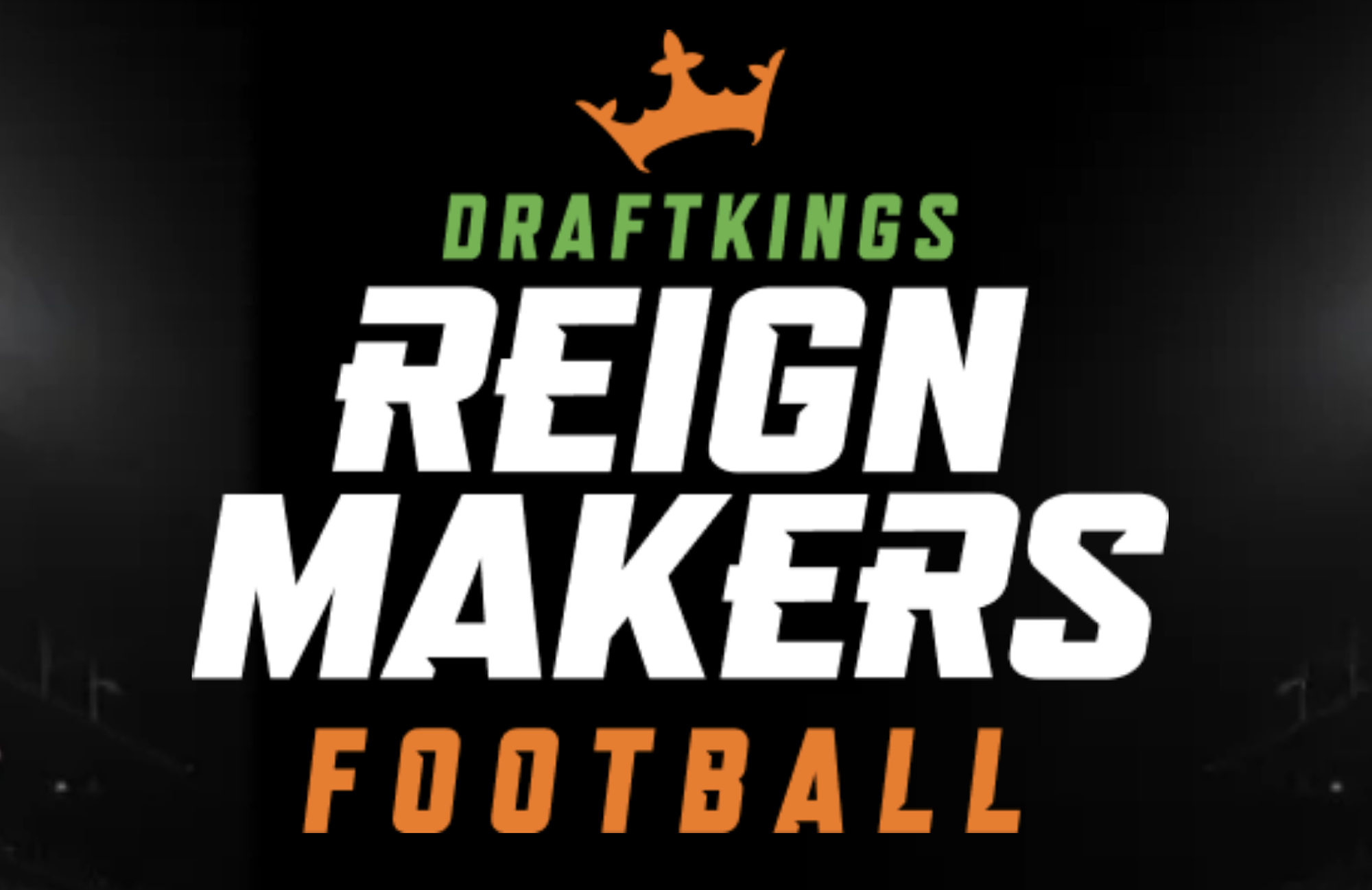
DraftKings, the daily fantasy sports and sports betting company, abruptly shut down a program called Reignmakers on Tuesday, posting a notice on its website and associated app and sending a mass email to some subset of its user base. Reignmakers, which the company launched in 2021, offered pay-to-play competitions in NFL football, PGA Tour golf and UFC mixed martial arts. The decision to eliminate the entire program, DraftKings says, was not made lightly but was forced “due to recent legal developments.”
DraftKings has yet to specify what “recent legal developments” are troubling its now-dead Reignmakers product. The company was sued in U.S. District Court in 2023 by a Reignmakers player named Justin Dufoe, who accuses the company of dealing in unregistered securities, taking advantage of relatively unsophisticated “retail investors,” and failing to market and support Reignmakers to the degree necessary to return to its users the financial benefits expected. DraftKings filed a motion in September to dismiss Dufoe’s complaint, but that motion was denied on July 2. A scheduling conference was held by the parties on July 29; Reignmakers was permanently shut down on July 30. A DraftKings spokesperson reached by Defector on Wednesday declined to confirm whether Dufoe’s complaint is the “recent legal development” that forced the company’s hand.
Users of the Reignmakers NFL product, who in recent days began murmuring on social channels about a notable lack of DraftKings activity so close to the start of the NFL preseason schedule, were caught off guard and, in some cases, devastated by the news. Members of the DraftKings Discord server, where all Reignmakers-related channels were abruptly shut down and locked following the announcement, flooded a general channel in various states of panic, sharing news, theorizing, lamenting, and, in some cases, openly worrying about whether it would be possible to recoup any decent fraction of the genuinely impressive sums of money they had invested in this DraftKings product.
Reignmakers is nominally a daily fantasy contest—users build lineups of players and then pit those lineups against other users’ lineups for cash prizes—but it’s actually a distributor of nonfungible digital tokens (NFTs), originated and sold by DraftKings, and then frequently resold on a dedicated secondary marketplace also hosted by DraftKings. At the lineup-building level, Reignmakers functions like a card-collecting game, with artificial scarcity driving the prices of the most coveted cards to insane, eye-popping heights. Reignmakers NFTs are tiered and offered in timed drops designed to heighten the sense of scarcity. A user can enter a lower-tier contest using a collection of NFTs that may have cost a few hundred dollars in total (or that were earned by purchasing random packs of NFTs that offer generally low odds of scoring top assets) and throw their lot in with hundreds of casual users competing for relatively unimpressive rewards. Random packs at the lowest tier would have prices as low as a few dollars; mid-tier cards—Star and Elite tiers, I’d guess—could cost a player upwards of $1,000.
But players interested in hunting down the biggest payouts, not just from games but from leaderboard prizes and other assorted prizes, would need to enter higher-tier games, and to enter the higher-tier games, a user’s collection needed to include higher-tier NFTs. DraftKings ensured that these cards were extremely scarce and could only be purchased directly on the marketplace at prices that any reasonable person would consider utterly insane.
For example, the highest-tier Reignmaker contests (called the Reignmakers tier, of course) have in the past been limited to listings with at least two of the highest-tier, rarest NFTs (also the Reignmaker tier) plus three NFTs from the second-highest tier (Legendary). NFTs at these tiers are expensive. Not just expensive in the way that, like, a steak dinner is expensive, but expensive in the way that buying even one of them should trigger a mandatory visit to a gambling addiction counselor, if not sirens and a straitjacket. Back in 2022a Reignmaker-level Ja’Marr Chase NFT from something called the Field Pass Promo Set could be purchased directly from the DraftKings Reignmaker Marketplace for a whopping $32,100.
Reignmakers users purchased NFTs at various levels with the expectation that owning them would convey better odds of winning contests hosted on DraftKings. This was the gamification element of Reignmakers, which emerged several months after DraftKings began trading and minting its NFTs. But as with all NFTs, a very large part of the real appeal for its buyers was the expectation, however insane, that these worthless, virtually worthless, infinitely duplicable digital images would increase in value over time. Now that both the Reignmakers game and the Reignmakers marketplace have been shut down, Reignmakers NFT holders are worried that their investments may have suddenly lost all monetary value. One Discord user described Tuesday as “a bad day to wake up and realize you have $2,000 worth of unopened NFL Rookie Packs”; Another user asked the group if they should expect “a refund” on the $10,000 they’ve already spent on Reignmakers NFTs this year. A pessimistic Reddit user posted tuesday that they would sue DraftKings if they were forced to take a total loss on a Reignmakers NFT collection worth approximately $100,000.
The game (scam?) was built to make numbers like these not only possible, but somewhat easily achievable. A user who intended to compete from a position of strength in multiple overlapping high-profile contests at the same time, and who had been in the blockchain madhouse for a period of years, could easily have spent six figures on Reignmakers NFTs. DraftKings used non-gaming incentives to entice players to spend more and more money, much like casinos give away free suites to players who over-bet on blackjack. Another Reddit user lamented the loss of the additional prizes and ranking bonuses he had hoped to earn in the upcoming NFL season by having a portfolio of NFTs that had reached the highest levels of value and prestige. “I was already loaded up on 2024 creation tokens and rookie debut cards,” said this Reignmakers userwho claimed his portfolio was finally “close to the top 250 overall.”
Dufoe’s complaint says the NFTs minted by DraftKings for Reignmakers qualify as securities, function like securities, and should be regulated as securities. In its motion to dismiss, DraftKings attempted to position its NFTs as game pieces — eye-wateringly expensive, yes, but essentially the same thing as Magic: The Gathering cards or Monopoly hotels. The court, in resolving these arguments, applied what’s known as “the Howey test,” referencing a case from 1946 in which the U.S. Supreme Court established a standard for determining whether a specific instrument qualifies as an investment contract. Judge Dennis J. Casper, in ruling against DraftKings’ motion, concluded that Dufoe could plausibly argue that Reignmakers’ NFT transactions represent “the pooling of assets from multiple investors in such a manner that all share in the profits and risks of the enterprise,” arguing that DraftKings’ absolute control over the game and marketplace effectively binds the financial interests of the company and the buyers, the latter of whom depend on the viability of both for their NFTs to retain any value.
Reignmakers users are different from Monopoly players in at least one crucial way: A person who buys a Monopoly board has no expectation from Hasbro that those little red and green pieces will appreciate in value. It’s a game! No matter what any hysterically conflicted party may say to the contrary, that’s not what NFT collecting is. DraftKings had been selling Reignmakers NFTs for months before they were gamified, and Dufoe, in his complaint, cites public comments made by DraftKings spokespeople that seem to explicitly position Reignmakers NFTs as assets with independent monetary value beyond their utility in Reignmakers contests. Judge Casper, in his ruling on the motion to dismiss, cites a Twitter account associated with a podcast run by DraftKings CEO Matthew Kalish, who in a tweet described NFTs as “the opportunity to invest in startups, artists, operations, and entrepreneurs all at once.” This is probably the kind of thing that NFT peddlers should stop saying. This advice assumes, of course, that NFTs will continue to exist as instruments on the other side of this and other lawsuits.
DraftKings has posted a worryingly sparse FAQ at the bottom of the your ad Tuesday, anticipating but largely failing to address questions from players who see this as yet another in a long line of brutal blockchain rug pulls. In a hilarious reversal of existing Reignmakers policy, Reignmakers users are now allowed by DraftKings to withdraw their Reignmakers NFTs from their DraftKings portfolios and into their personal NFT wallets, where those NFTs will have precisely zero value, to anyone, for the rest of all time. There’s also vague language about Reignmakers users having the option to “relinquish” their NFTs back to DraftKings in exchange for “cash payments,” subject to “certain conditions” and according to an as-yet-unspecified formula that will take into account, among other things, the “size and quality” of a player’s collection.
Reignmakers users are not optimistic. Those who claim to have been victims of other blockchain market crashes are warning their peers on Discord and Reddit to expect payouts that amount to pennies on the dollar; in the absence of any clarifying information, users are unsure whether cashing out their NFTs from Reignmakers to their personal NFT wallets, for reasons that completely pass any and all understanding, would effectively preclude the possibility of delivering these silly digital tokens back to DraftKings. It remains to be seen what exactly DraftKings has in mind with the “certain conditions” attached to the delivery process. There is much that has yet to be resolved. A DraftKings spokesperson contacted by Defector indicated that more time would be needed to answer a list of specific questions and issued a statement noting that it is “in DraftKings’ DNA to innovate and disrupt to provide the best possible gaming experiences for our customers.” The original complaint is embedded below.
Do you know anything about the demise of Reignmakers, either from the consumer side or from the DraftKings side? We’d love to hear from you. Get it in touch!
Recommended
NFTs
There Will Be No More ‘Mario & Sonic’ Olympics Because of NFTs
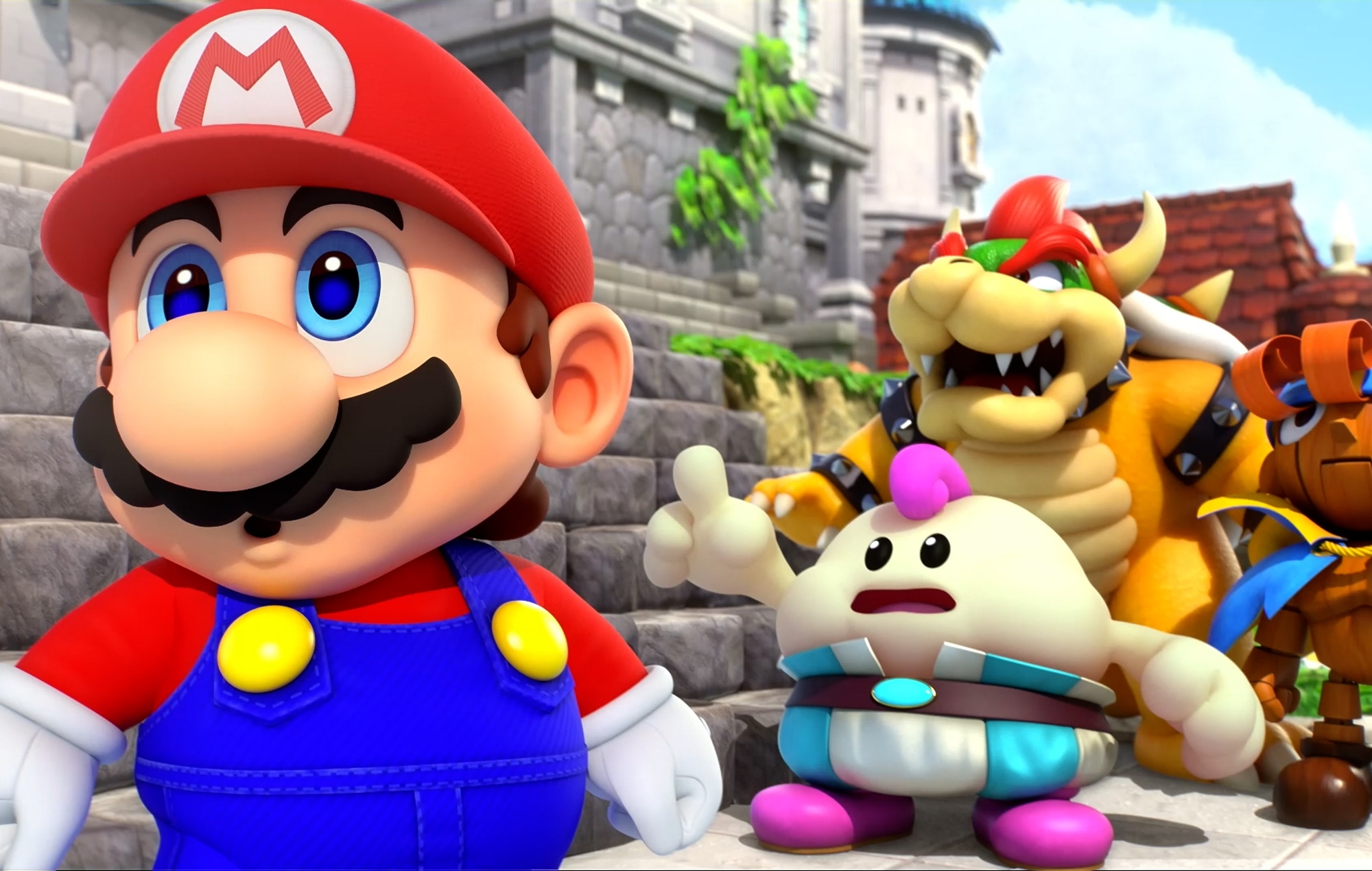
Nintendo and SEGA have been teaming up with the Olympics for several years now in the popular Mario & sonic in the Olympic Games series, but a new report claims the International Olympic Committee has abandoned the series in favor of new deals in eSports and NFTs.
According to Eurogamer“A veteran behind the series,” Lee Cocker, told the outlet that the IOC chose not to renew its license with SEGA and Nintendo, letting it expire in 2020. “They wanted to look at other partners and NFTs and eSports,” Cocker told Eurogamer. “Basically, the IOC wanted to bring [it] turn inward and look for other partners so they could get more money.”
Mario & Sonic at the Olympic Games is a series that has been running since 2008, with six main games covering the regular and Winter Olympics. In the games, players could control various characters from the Mario and Sonic franchises and compete in Olympic sporting events.
It’s no secret that NFTs are a big part of this year’s Paris 2024 Olympics. Olympics Go! Paris 2024 is a mobile and mobile-connected game your site states that players can “join the excitement of the Paris 2024 Olympic Games with nWay’s officially licensed, commemorative NFT Digital Pins collection honoring Paris 2024!”
As for eSports, Saudi Arabia will host the ESports Olympic Games in 2025. This is part of a partnership with the Saudi National Olympic Committee (NOC) that is expected to last for the next 12 years and is expected to feature regular events.
IOC President Thomas Bach said: “By partnering with the Saudi NOC, we also ensure that Olympic values are respected, in particular with regard to the game titles on the programme, the promotion of gender equality and the engagement with young audiences who are embracing esports.”
In other news, Someone claimed they’re suing Bandai Namco because Elden Ring is too difficult.
-

 News10 months ago
News10 months agoMore Crypto AI Alliances Emerge Following $7.5 Billion Token Merger — TradingView News
-

 News10 months ago
News10 months agoOver 1 million new tokens launched since April
-

 Altcoins10 months ago
Altcoins10 months agoAltcoin Investments to create millionaires in 2024
-
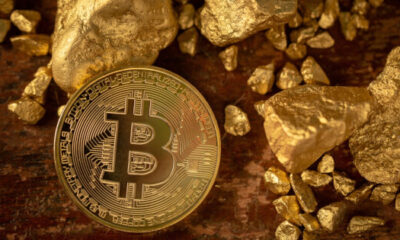
 Memecoins8 months ago
Memecoins8 months agoMemecoins dominate major derivatives in terms of open interest | Flash News Detail
-

 News8 months ago
News8 months agoInvest Now: The Hottest New Cryptocurrencies of August 2024 That Could Skyrocket
-
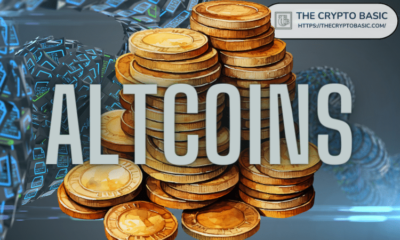
 Altcoins8 months ago
Altcoins8 months agoOn-chain data confirms whales are preparing for altcoin surge with increased buy orders
-
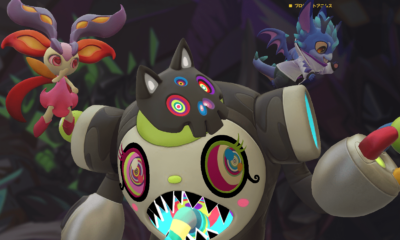
 NFTs8 months ago
NFTs8 months agoRTFKT Announces Project Animus Reveal, Launches Egg Unboxing Event Amid Mixed Reactions | NFT CULTURE | NFT News | Web3 Culture
-

 Videos11 months ago
Videos11 months agoMoney is broke!! The truth about our financial system!
-
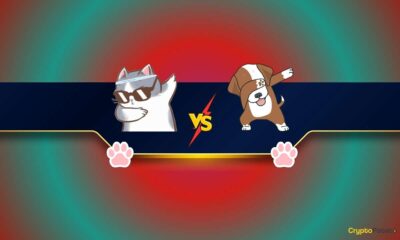
 Memecoins10 months ago
Memecoins10 months agoChatGPT Analytics That Will Work Better in 2024
-
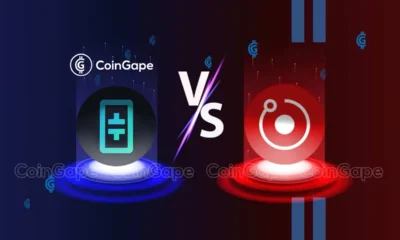
 Altcoins10 months ago
Altcoins10 months agoRender vs. Theta; Which DePIN Altcoin to buy in May
-
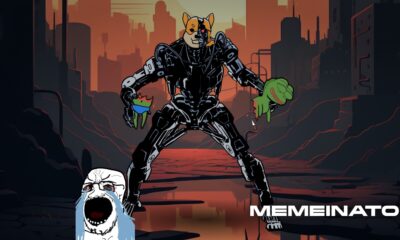
 Altcoins8 months ago
Altcoins8 months agoHot New Altcoin: Memeinator’s Price Upside Potential in July
-

 NFTs11 months ago
NFTs11 months agoSurprisingly, Bored Apes is now laying off employees as the NFT market disintegrates





